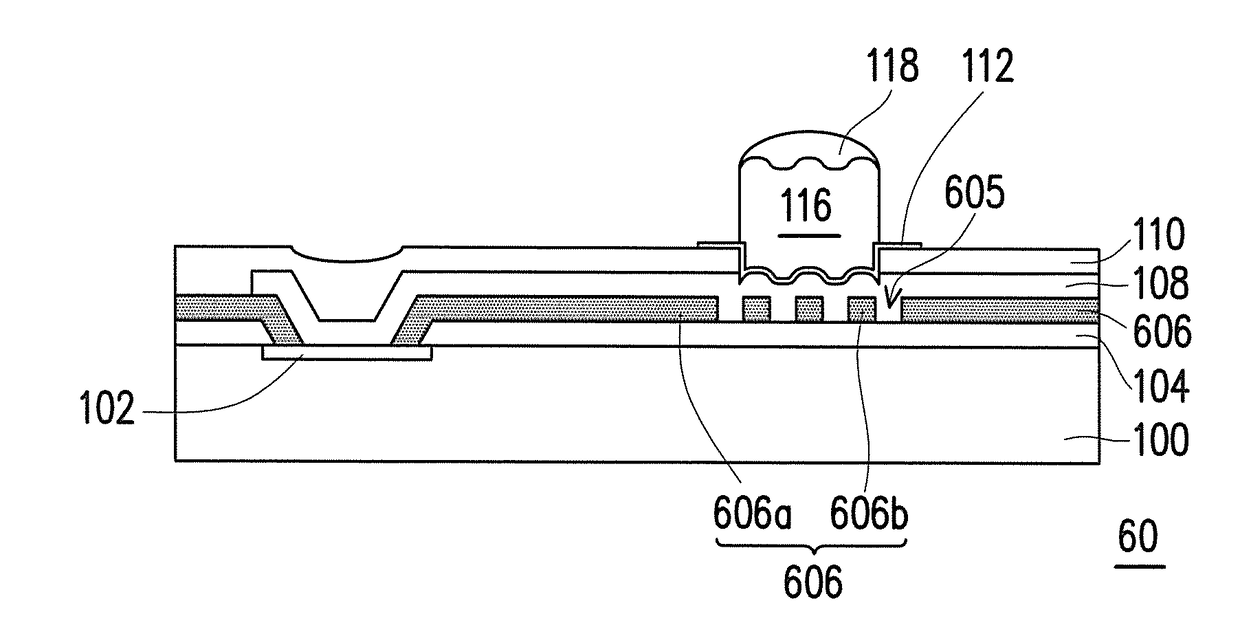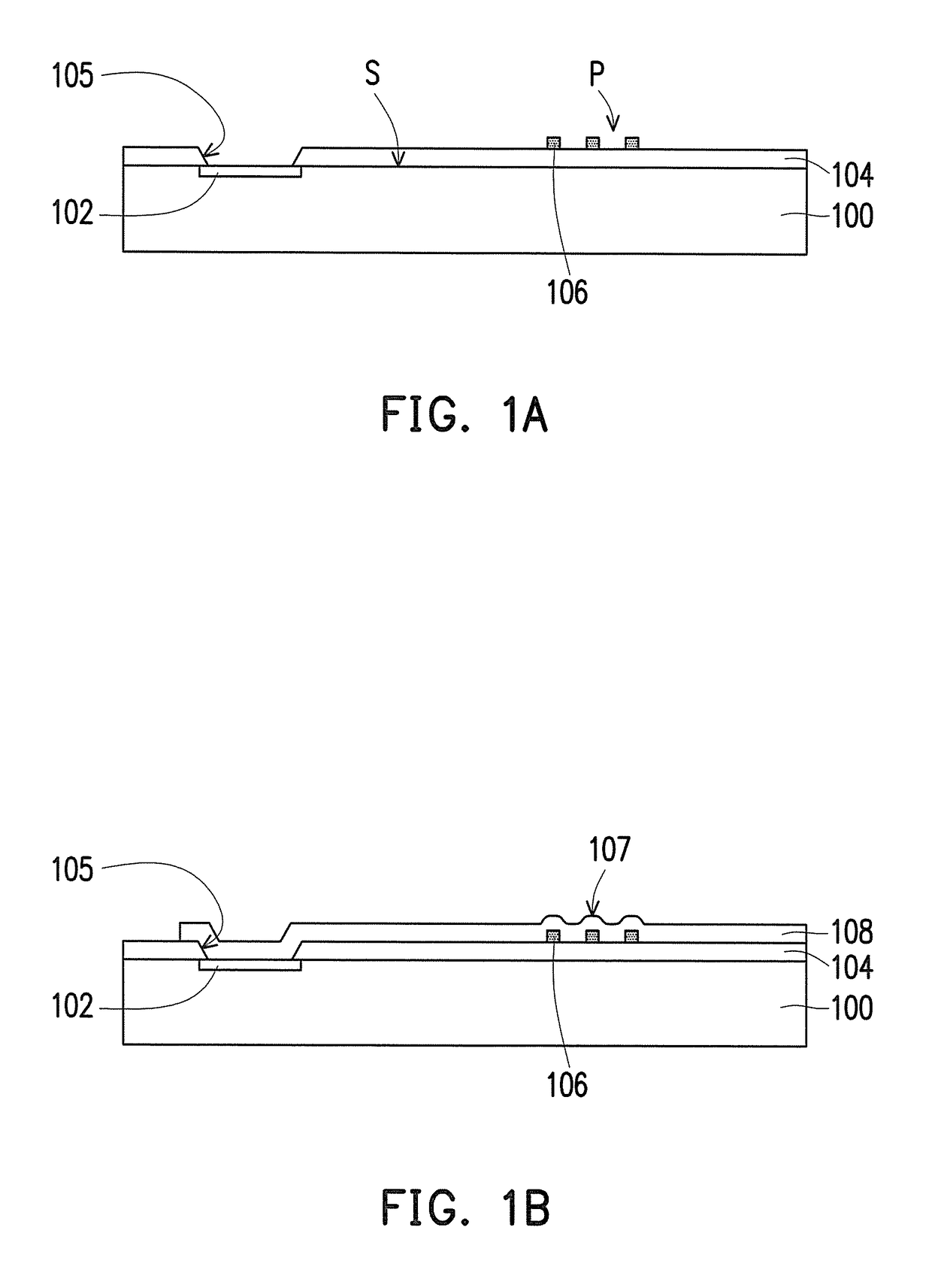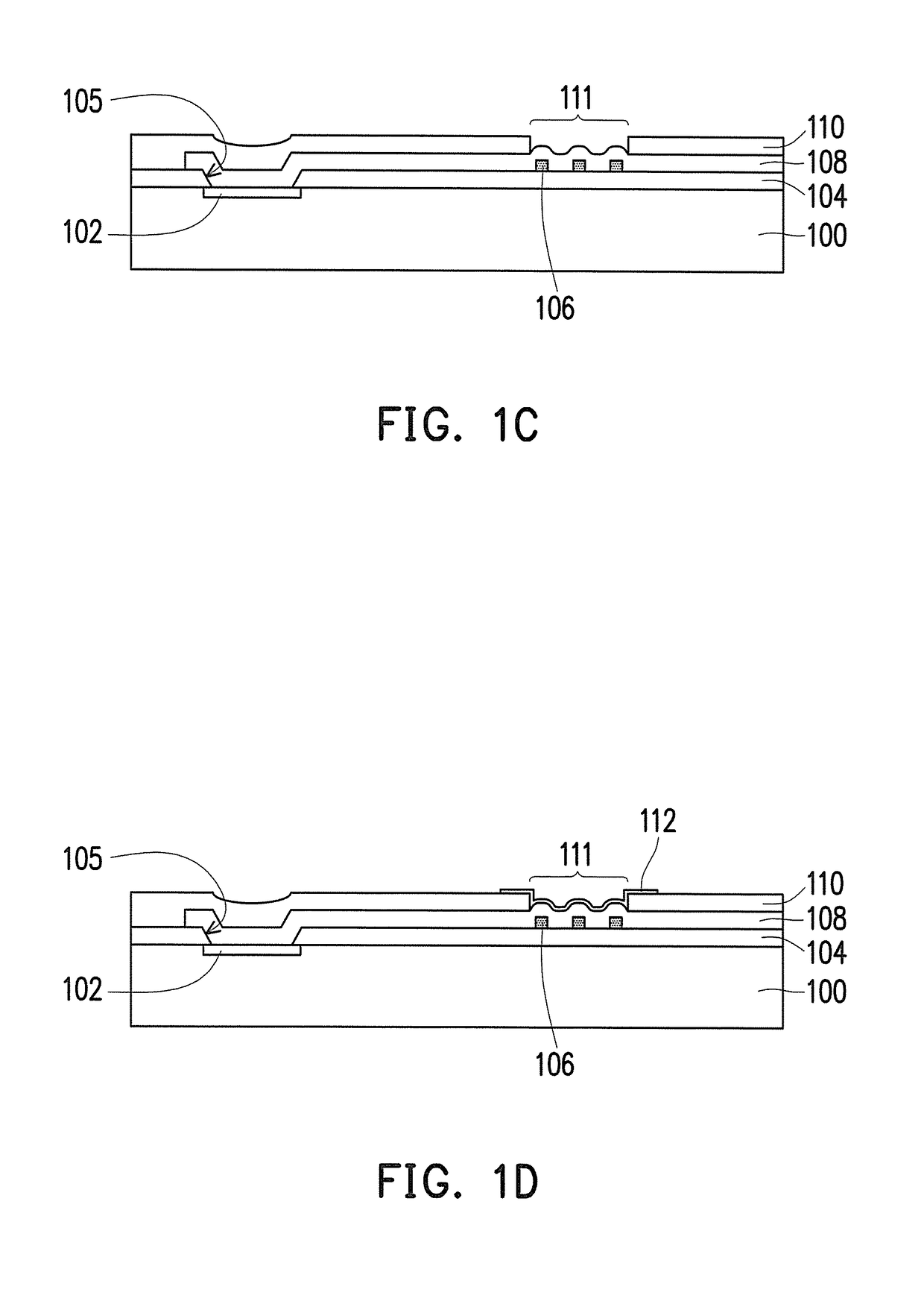Semiconductor device
a technology of semiconductor devices and semiconductors, applied in semiconductor devices, semiconductor/solid-state device details, electrical apparatus, etc., can solve problems such as delamination, reducing reliability, and slipping, and achieve the effect of improving reliability
- Summary
- Abstract
- Description
- Claims
- Application Information
AI Technical Summary
Benefits of technology
Problems solved by technology
Method used
Image
Examples
first embodiment
[0037]FIG. 1A to FIG. 1F are schematic cross-sectional diagrams of a manufacturing process of a semiconductor device according to the invention. FIG. 2A to FIG. 2B are schematic top views of a portion of FIG. 1A respectively.
[0038]Referring to FIG. 1A, the invention provides the manufacturing process of a semiconductor device 10 of the first embodiment including the following steps. First, a substrate 100 is provided. A material of the substrate 100 may be at least one material selected from the group consisting of Si, Ge, SiGe, GaP, GaAs, SiC, SiGeC, InAs, and InP, for example. The substrate 100 may also be a silicon-on-insulator (SOI) substrate.
[0039]Then, a pad 102 is formed on an active surface S of the substrate 100. In an embodiment, a material of the pad 102 includes a metal material. The metal material may be copper, aluminum, gold, silver, nickel, palladium, or a combination thereof, for example. A method of forming a pad 102 may be physical vapor deposition, for example.
[0...
second embodiment
[0050]FIG. 3 is schematic cross-sectional diagram of a semiconductor device according to the invention.
[0051]Referring to FIG. 3, basically, a semiconductor device 20 of the second embodiment is similar to the semiconductor device 10 of the first embodiment. The difference between the two is that, a bump 216 of the semiconductor device 20 of the second embodiment has a flat surface 217. A method of forming the flat surface 217 may be that, after forming the bump 216, a grinding method is further used to planarize a surface of the bump 216.
third embodiment
[0052]FIG. 4 is schematic cross-sectional diagram of a semiconductor device according to the invention.
[0053]Referring to FIG. 4, basically, a semiconductor device 30 of the third embodiment is similar to the semiconductor device 10 of the first embodiment. The difference between the two is that, the semiconductor device 30 of the third embodiment further includes a dielectric layer 305 disposed between the convex patterns 106 and the protective layer 104. In an embodiment, a material of the dielectric layer 305 is the same or different from the material of the convex patterns 106. For example, both the convex patterns 106 and the dielectric layer 305 may be PI. On the other hand, the dielectric layer 305 may be silicon oxide, and the convex patterns 106 may be PI.
PUM
 Login to View More
Login to View More Abstract
Description
Claims
Application Information
 Login to View More
Login to View More - R&D
- Intellectual Property
- Life Sciences
- Materials
- Tech Scout
- Unparalleled Data Quality
- Higher Quality Content
- 60% Fewer Hallucinations
Browse by: Latest US Patents, China's latest patents, Technical Efficacy Thesaurus, Application Domain, Technology Topic, Popular Technical Reports.
© 2025 PatSnap. All rights reserved.Legal|Privacy policy|Modern Slavery Act Transparency Statement|Sitemap|About US| Contact US: help@patsnap.com



